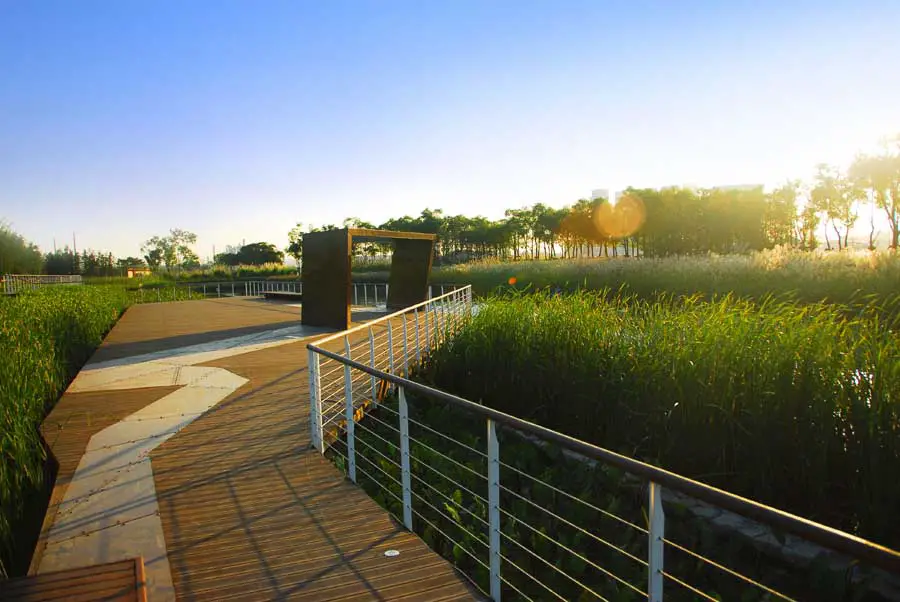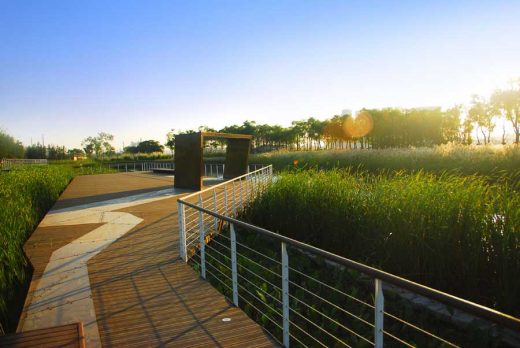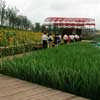Houtan Park Shanghai, Building, Architect, Photos, Chinese Landscape Design Images
Shanghai Houtan Park : Photographs
Houtan Park: Chinese landscape design by Turenscape
10 Aug 2010
Houtan Park Shanghai
Category: Landscape
Location: Shanghai, China
Architect: Turenscape, Beijing, China
WAF Entry: 2010
Award: World Architecture Festival 2010 – Category Winner
Shanghai Houtan Park
Project Statement
Built on a brownfield of a former industrial site, Houtan Park is a regenerative living landscape on Shanghai’s Huangpu riverfront. The park’s constructed wetland, ecological flood control, reclaimed industrial structures and materials, and urban agriculture are integral components of an overall restorative design strategy to treat polluted river water and recover the degraded waterfront in a aesthetically pleasing way.
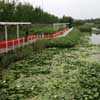
Project Narratives
1 Objectives and Challenges
The site is a narrow linear 14-hectare band located along the Huangpu River waterfront in Shanghai, China. This brownfield, previously owned by a steel factory and a shipyard, had few industrial structures remaining and the site was largely used as a landfill and lay-down yard for industrial materials.
Challenges? The first challenge was restoring the degraded environment. The site is a brownfield littered with industrial and construction debris throughout the site. The water of Huangpu River is highly polluted with a national water quality ranking of Lower Grade V, the lowest grade on a scale of I-V and is considered unsafe for swimming and recreation and devoid of aquatic life. The eminent site design challenge was to transform this degraded landscape into a safe and pleasant public space. The second challenge was to improve flood control.
The existing concrete floodwall was designed to protect against a 1,000-year flood event? but it is rigid and lifeless. The 2.1 meter daily tidal fluctuation creates a muddy and littered shoreline and is currently inaccessible to the public. A conventional retaining wall would continue to limit accessibility and preclude habitat creation along the water’s edge, so an alternative flood control design proposal was necessary. The third challenge was the site itself. The area is long and narrow locked between the Huangpu River and an urban express way with water frontage over 1.7 kilometers in length but averaging only 30-80 meters in width.
2 Design Strategy
Regenerative design strategies used to transform the site into a living system that offer comprehensive ecological services included: food production, flood, water treatment, and habitat creation combined in an educational and aesthetic form.
Through the center of the park, a linear constructed wetland was designed to create a reinvigorated waterfront as a living machine to treat contaminated water from the Huangpu River. Cascades and terraces are used to oxygenate the nutrient rich water, remove and retain nutrients and reduce suspended sediments while creating pleasant water features; Different species of wetland plants were selected and designed to absorb different pollutants from the water.
Field testing indicates that 2,400 cubic meters per day of water can be treated from Lower Grade V to Grade III. The treated water can be used safely throughout the Expo for non-potable uses, and save half a million US dollars in comparison with conventional water treatment.
The wetland also acts as a floodable buffer. The meandering valley along the wetland creates a series of visual interest and refuge within the bustling world exposition with opportunities for recreation, education, and research. The terrace design of the wetland alleviates the elevation difference between the city the river, safely reconnecting people to the water’s edge. Additionally, the existing concrete floodwall was replaced by a more habitat friendly riprap.
Overlapped in the matrix of ecologically regenerated landscape are layers of agricultural and industrial past of the site and future of the post-industrial eco-civilization.
Inspired by the fields of Chinese agricultural landscape, terraces were created to break down the 3-5 meter (15-18 foot) elevation change from the water’s edge to the road, and to slow the runoff directed to the stream in the constructed wetland. Crops and wetland plants were selected to create an urban farm allowing people to witness seasonal changes: the golden blossoms in the spring, splendid sunflowers in the summer, fragrance of the ripened rice in the fall, and green clover in the winter.
The terraces enrich the landscape along the wetland by creating spaces that encourage visitors to enter the living system through the field’s corridors and experience the agricultural landscape and wetland firsthand. The paths, like capillaries of a sponge, absorb and pull people to circulate through the park.
The industrial spirit of the site is celebrated through the reclamation of industrial structures and materials. Shanghai is the birthplace of China’s modern industry and the iconic structures that remained onsite have been transformed into hanging gardens and overlook platforms. The reclaimed steel panels hail the site’s former industrial spirit. Situated throughout the wetland valley, the folded steel panels are used to frame views of Shanghai’s skyline and highlight the industrial past. The materials are reconfigured to create artful forms, new paving material for the boardwalk, and shelters.
An ecologically recovered landscape, urban agriculture and industrial spirit are the three major layers of the park, woven together through a network of paths where visitors are educated about green infrastructure within a lushly restored recreational area.
This network ensures seamless connections between the park and its surroundings, encourages access within the site that not only effectively accommodates the massive pedestrian flows expected during the Expo, but ensures a pleasant and accessible public park at the human scale afterwards. Numerous platforms and enclosed ‘containers’ are designed as the nodes on the pedestrian network. Groves of bamboo and Chinese Redwood trees act as screens along the paths to break up the spaces.
Shanghai Houtan Park images / information from FD
Location: Shanghai, China
Shanghai Architecture
Shanghai Architectural Designs – chronological list
Shanghai Architecture Walking Tours
Shanghai Building – Selection
Spanish Pavilion Shanghai Expo 2010
Design: Miralles Tagliabue EMBT
Shanghai Expo 2010
Danish Pavilion, Expo 2010
Design: BIG
Shanghai Expo 2010 Pavilion
Spatial Renovation of M.Y.Lab Wood Workshop, 1205 Kaixuan Road, Changning District
Design: Continuation Studio Architects
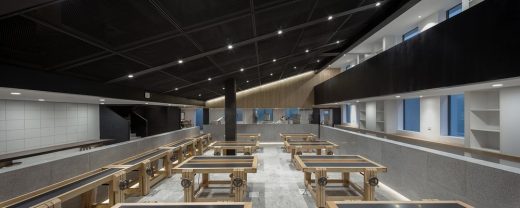
photo : SHIROMIO Studio
Spatial Renovation of M.Y.Lab Wood Workshop
Comments / photos for the Houtan Park Shanghai page welcome

